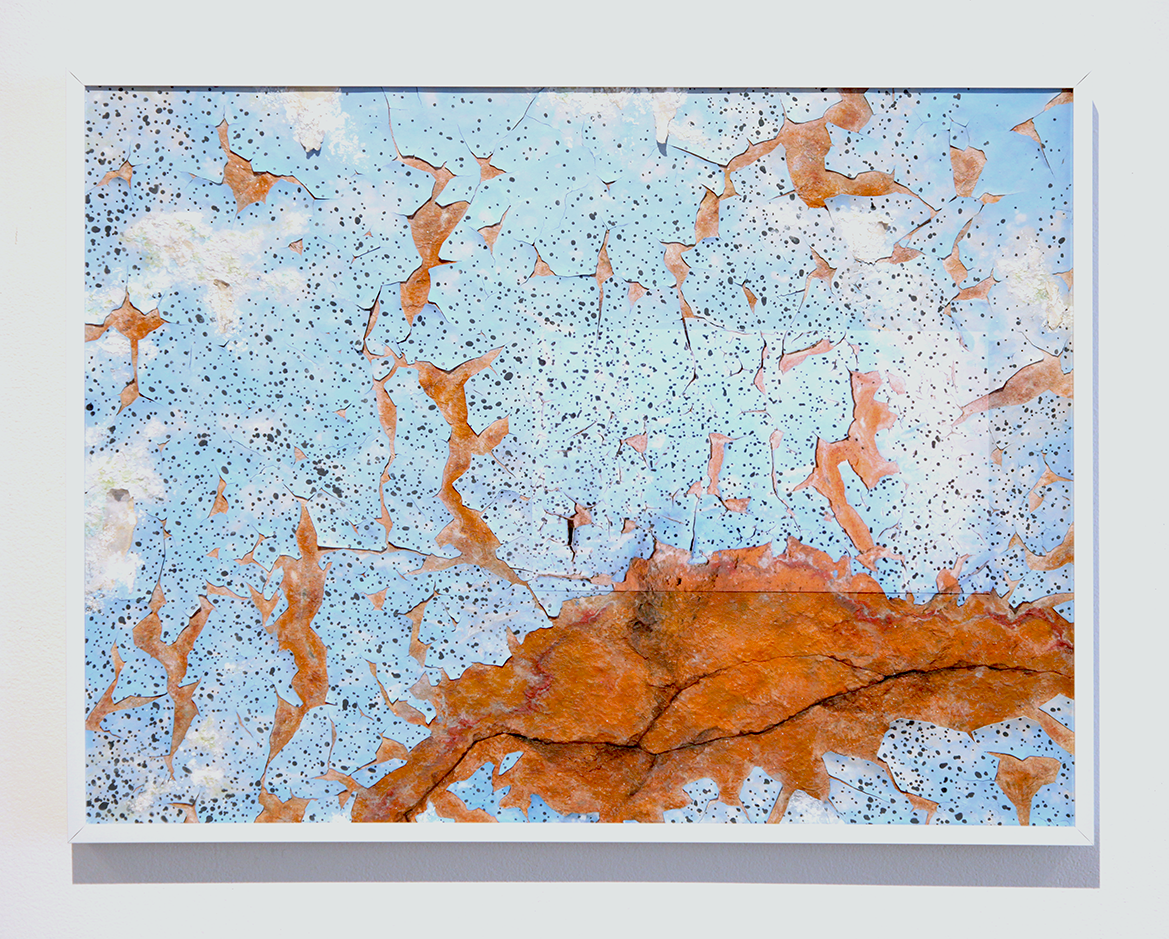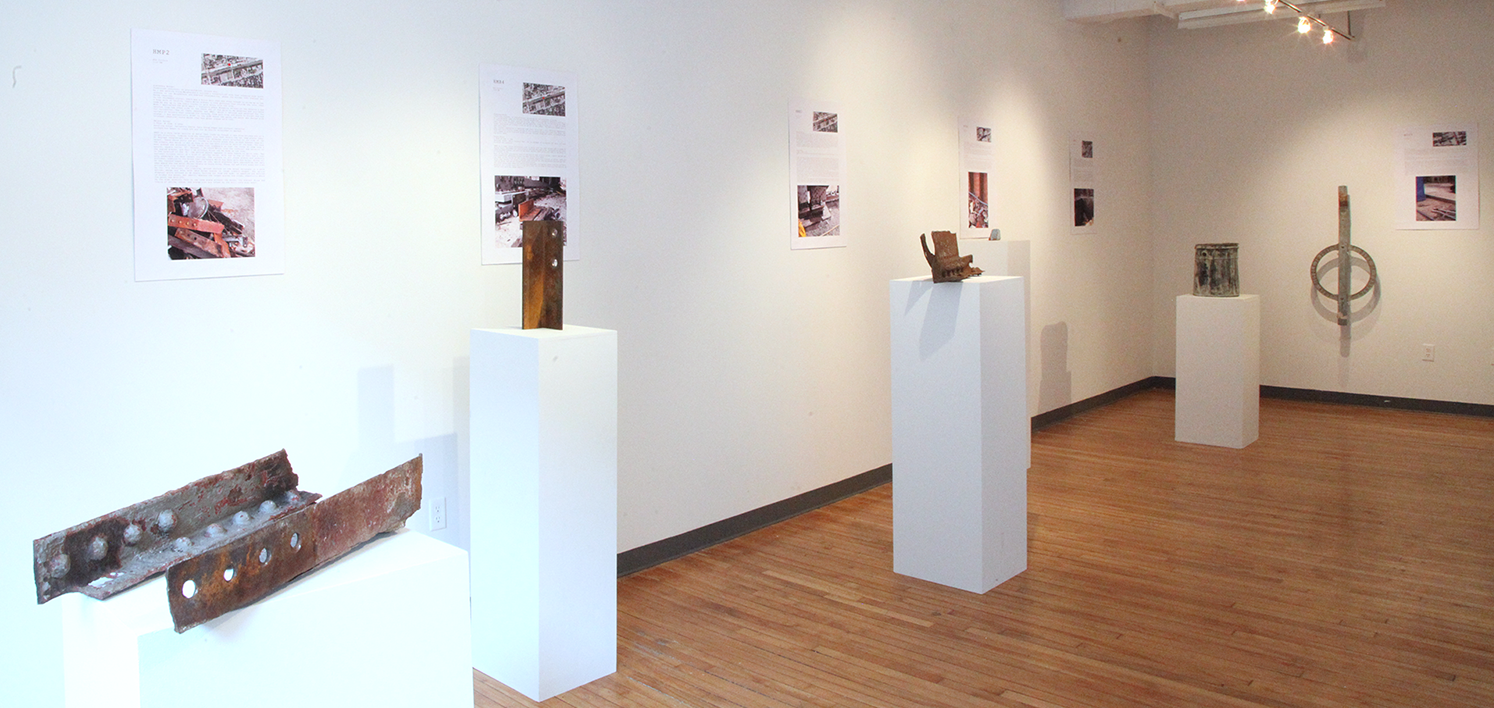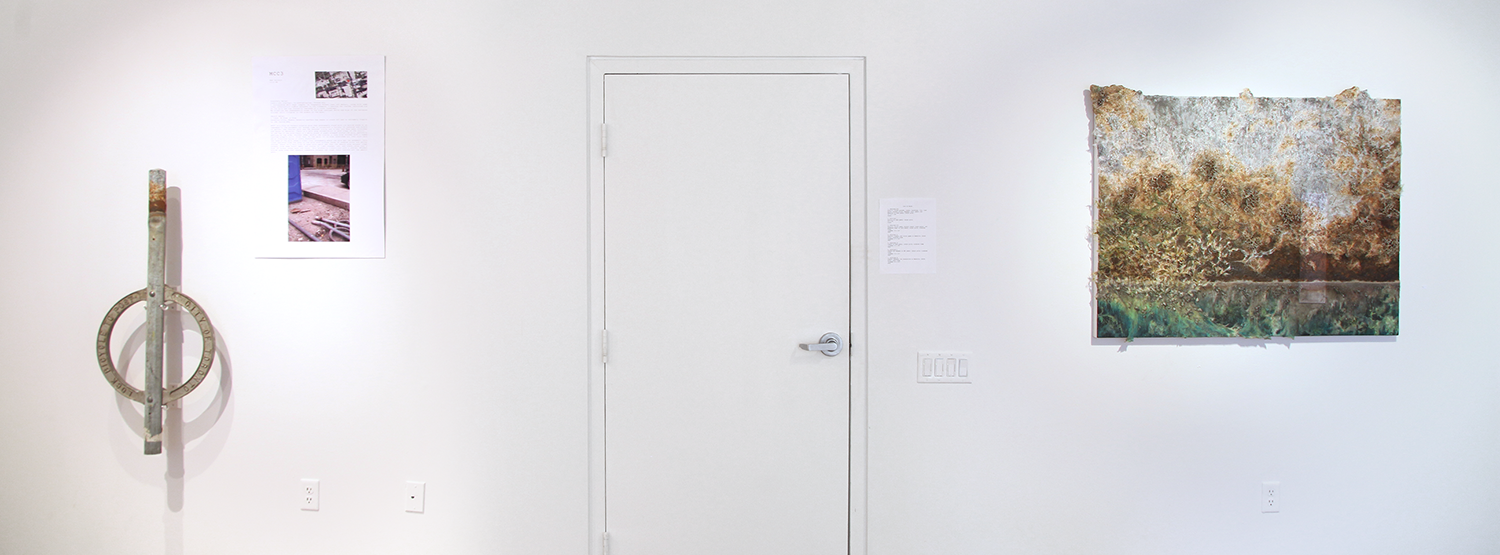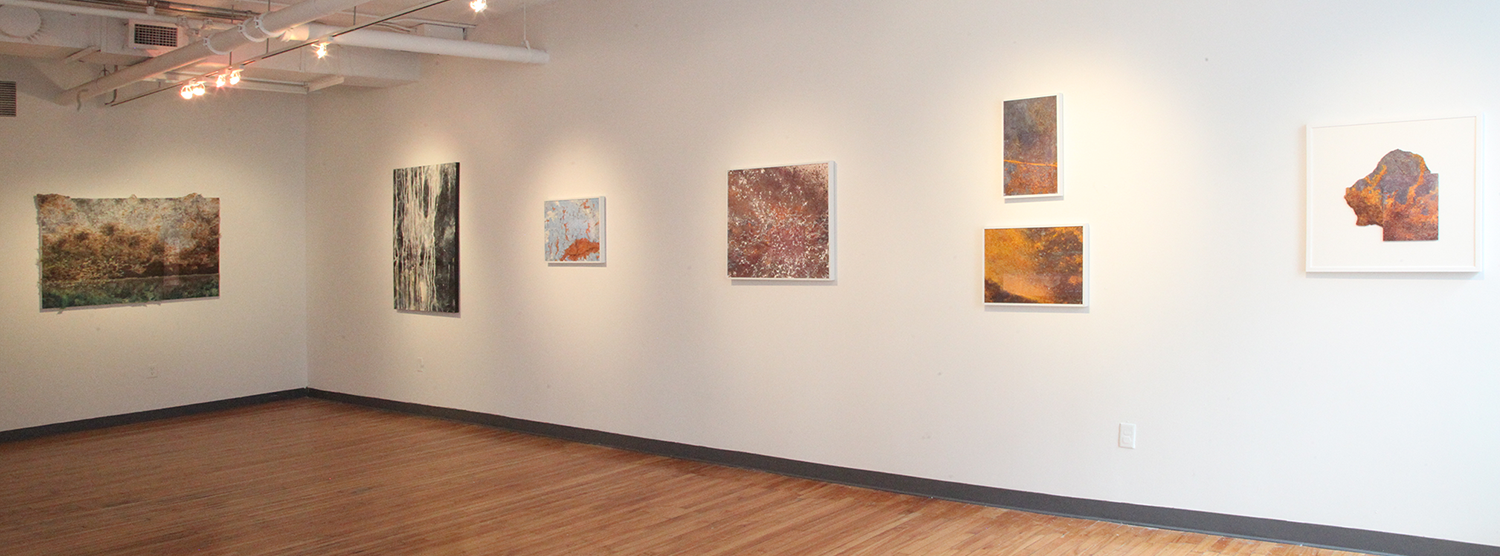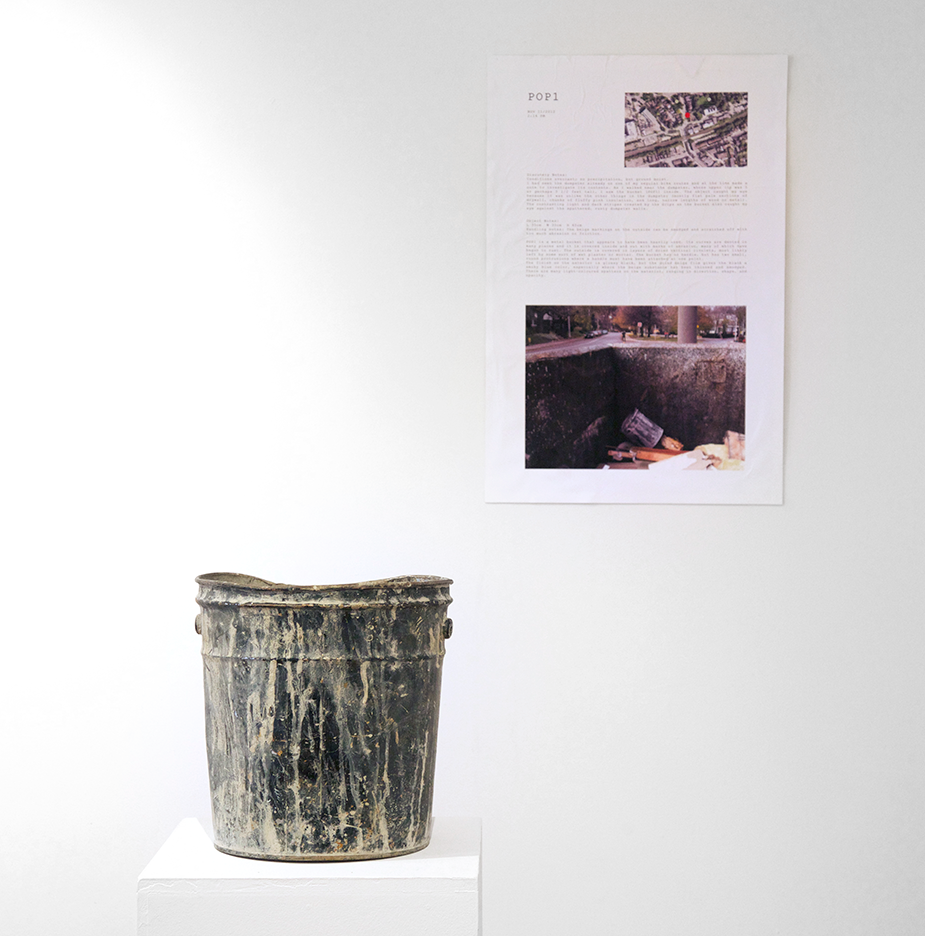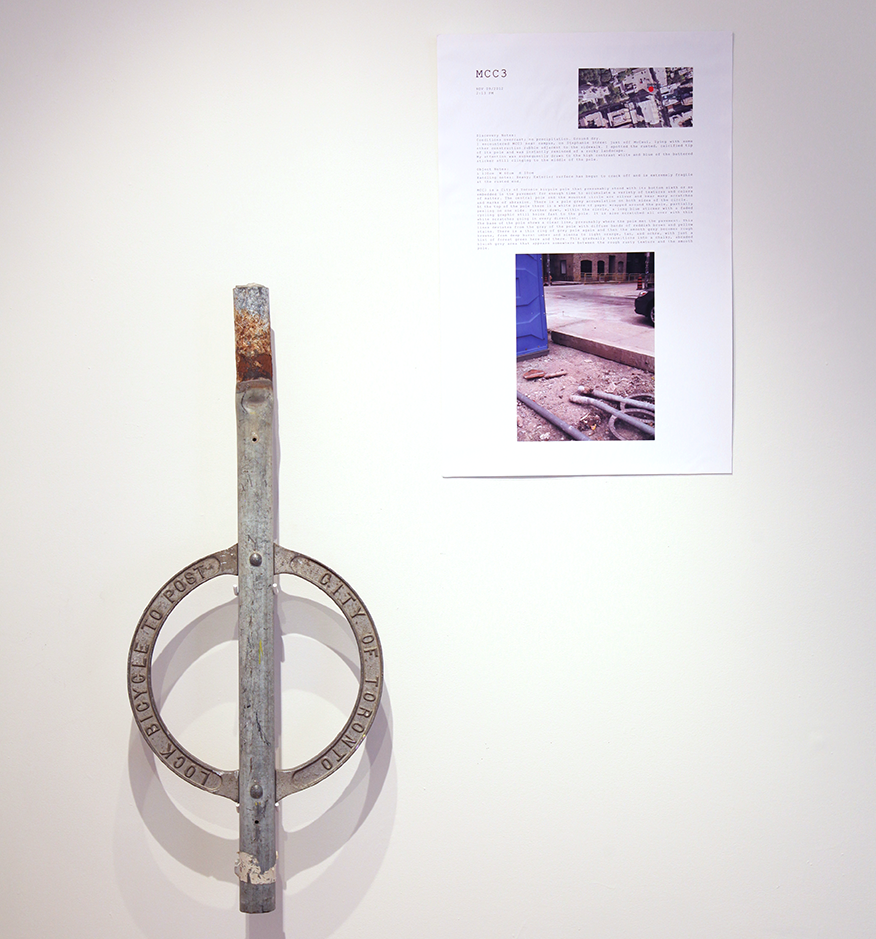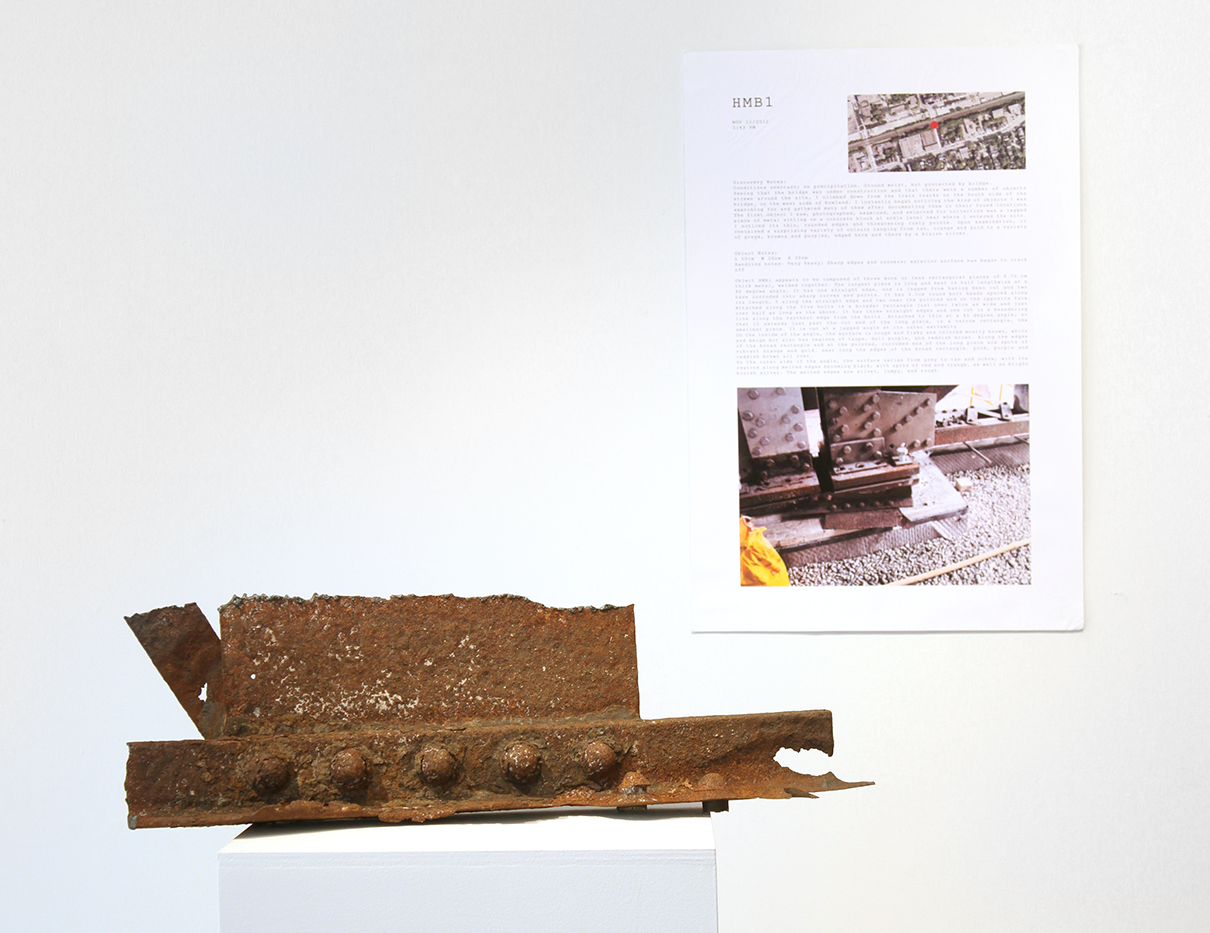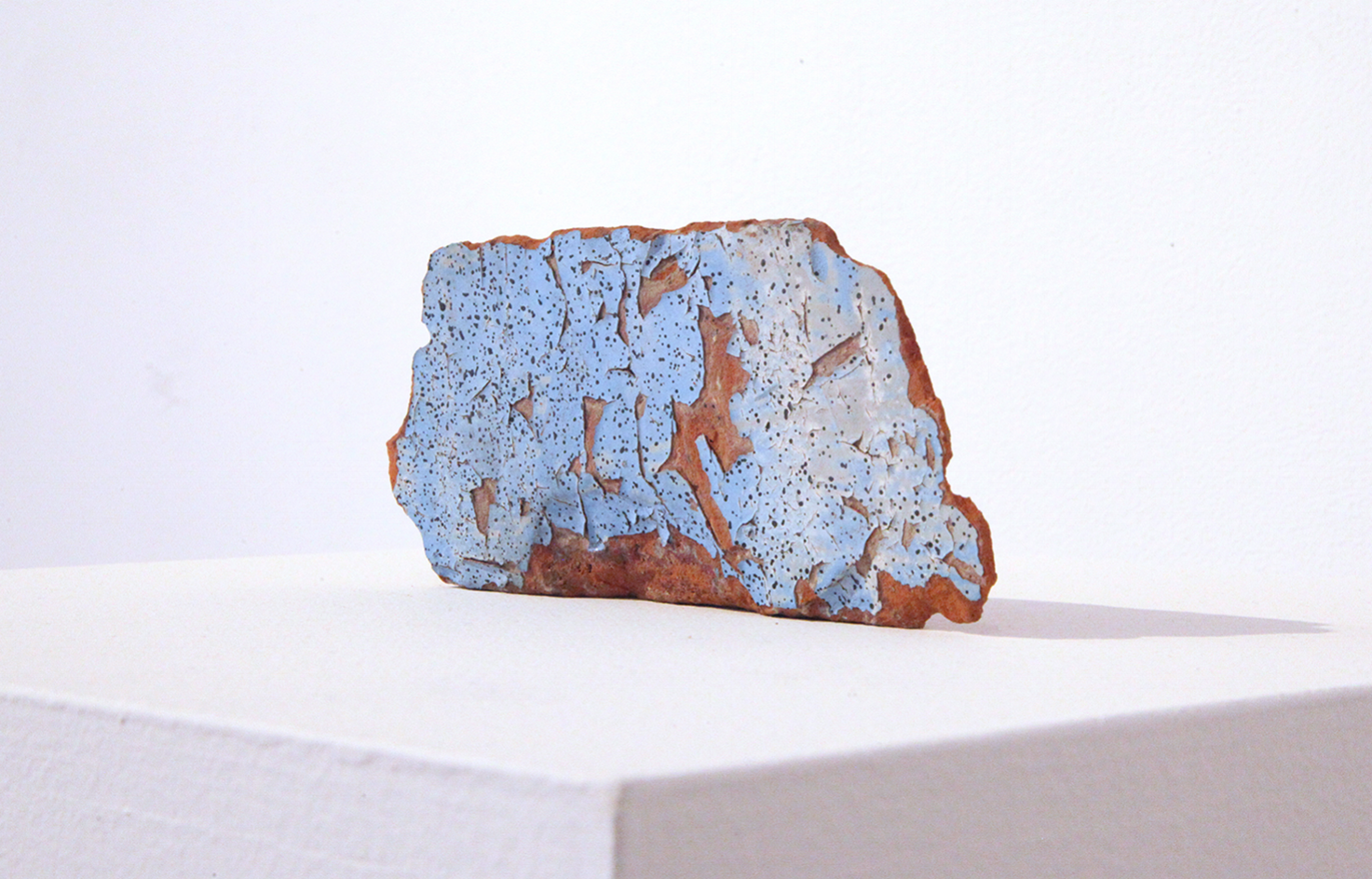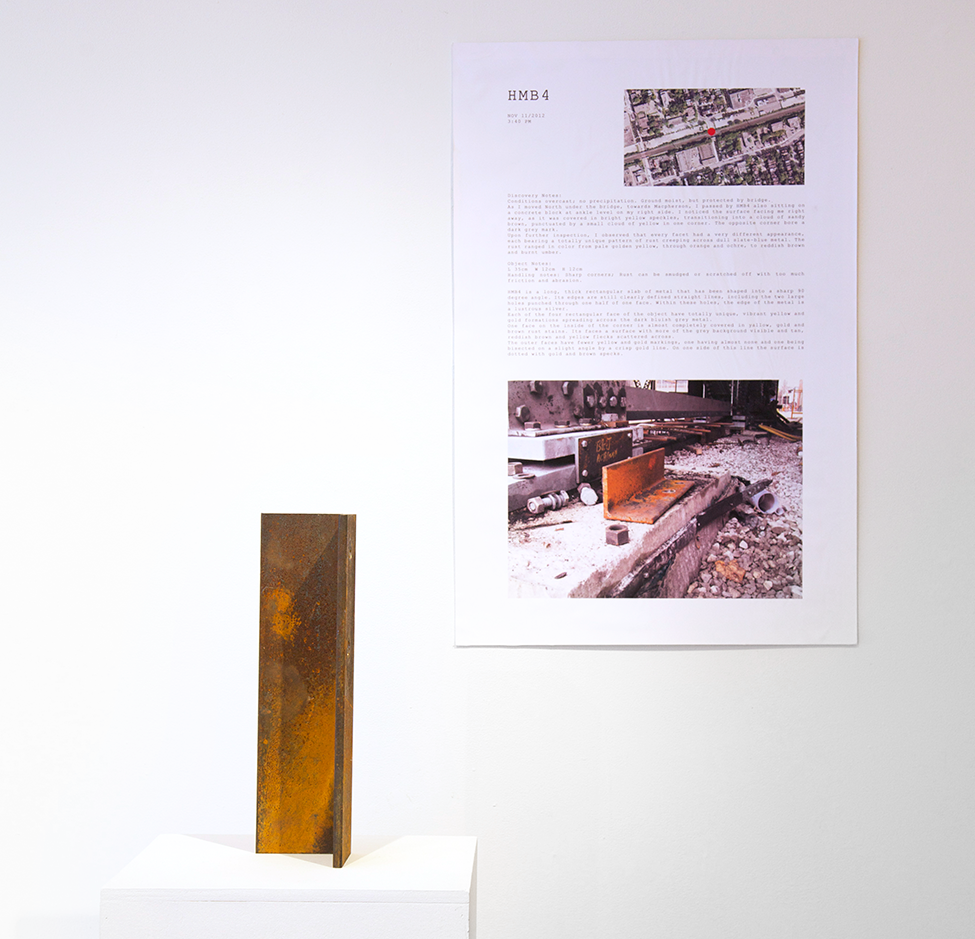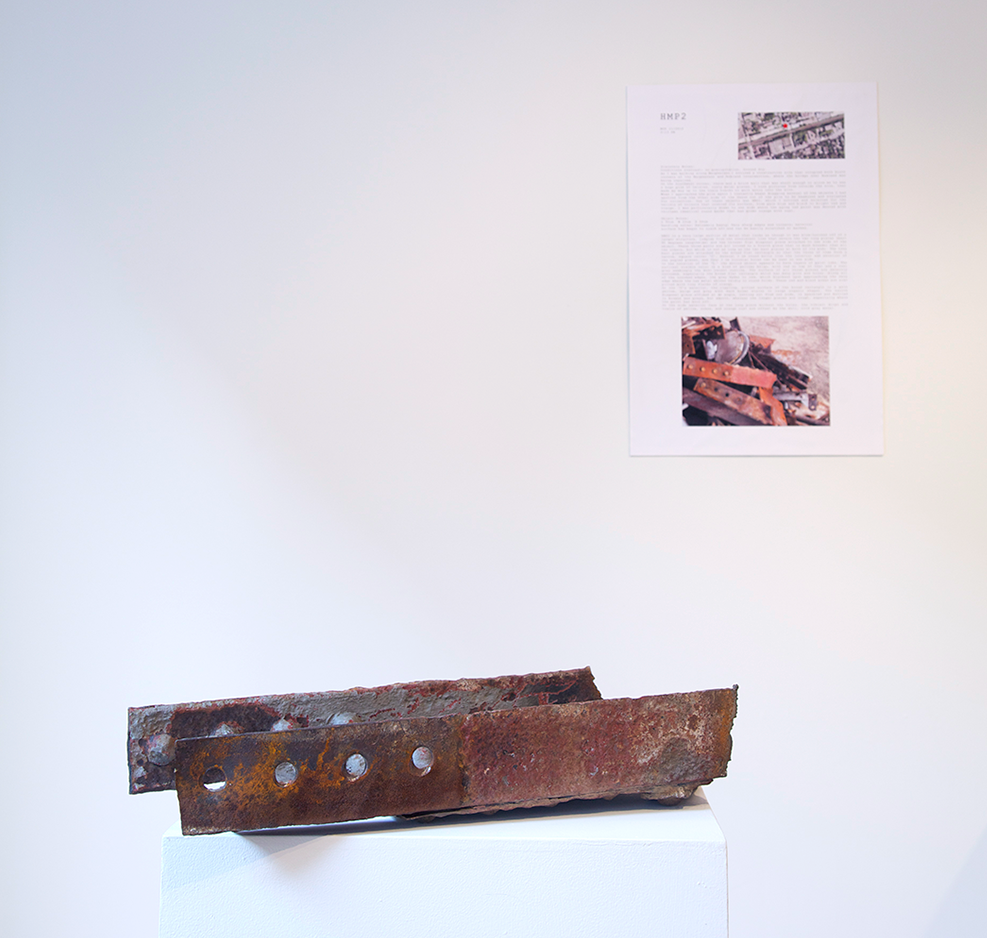Digital Adaptations
OCAD University Graduate Gallery
205 Richmond St. West, Toronto
Jan 10-19, 2014
Each of the paintings above begins from an image of a found texture - a photograph taken of the surface of an object I encountered while wandering the city. This photograph forms the starting point for a larger composition that disguises the original image by seamlessly continuing its texture and coloration beyond the photograph's cropped edges. its aesthetic order is translated outward using various other materials to explore how plausibility is achieved in representing beyond the limited field of the image.
Since before the first writing was developed, images have been important tools for communication in human societies, allowing a sufficiently skilled artist to make concretely visible what could be pictured by the mind (whether memories of things seen or the products of imagination) through a likeness created out of the materials at one's disposal.
Representation through images can take many forms, depending on the artist's choices, but the success of an image as a representation depends on the viewer's individual judgment, because this judgment involves not only vision but also active, imaginative extrapolations on vision that are unique to one's particular experiences and cultural context.
This interpretation and evaluation of images is a complex and poorly understood process of generating meaning by expanding upon what is seen. The work in "Digital Adaptations" explores the role of visualization in seeing, interpreting and making representative images. What are the qualities of a successful representation and how does it lead the viewer to interpret the image as plausible?
Below are images documenting the exhibition, including the objects from which the paintings were derived, and the arrangement of the exhibition as a whole, with each painting positioned directly across from its corresponding object.
